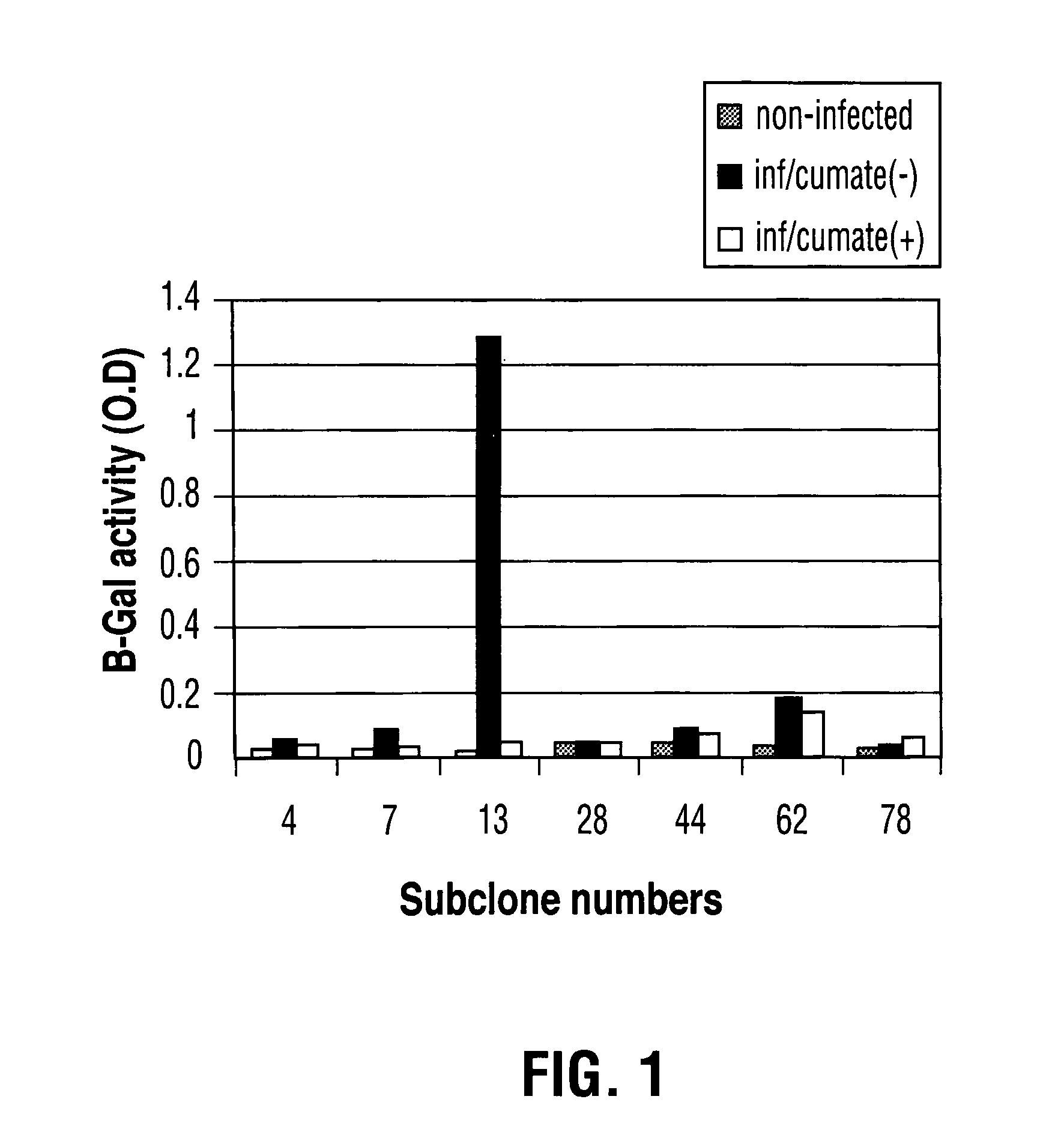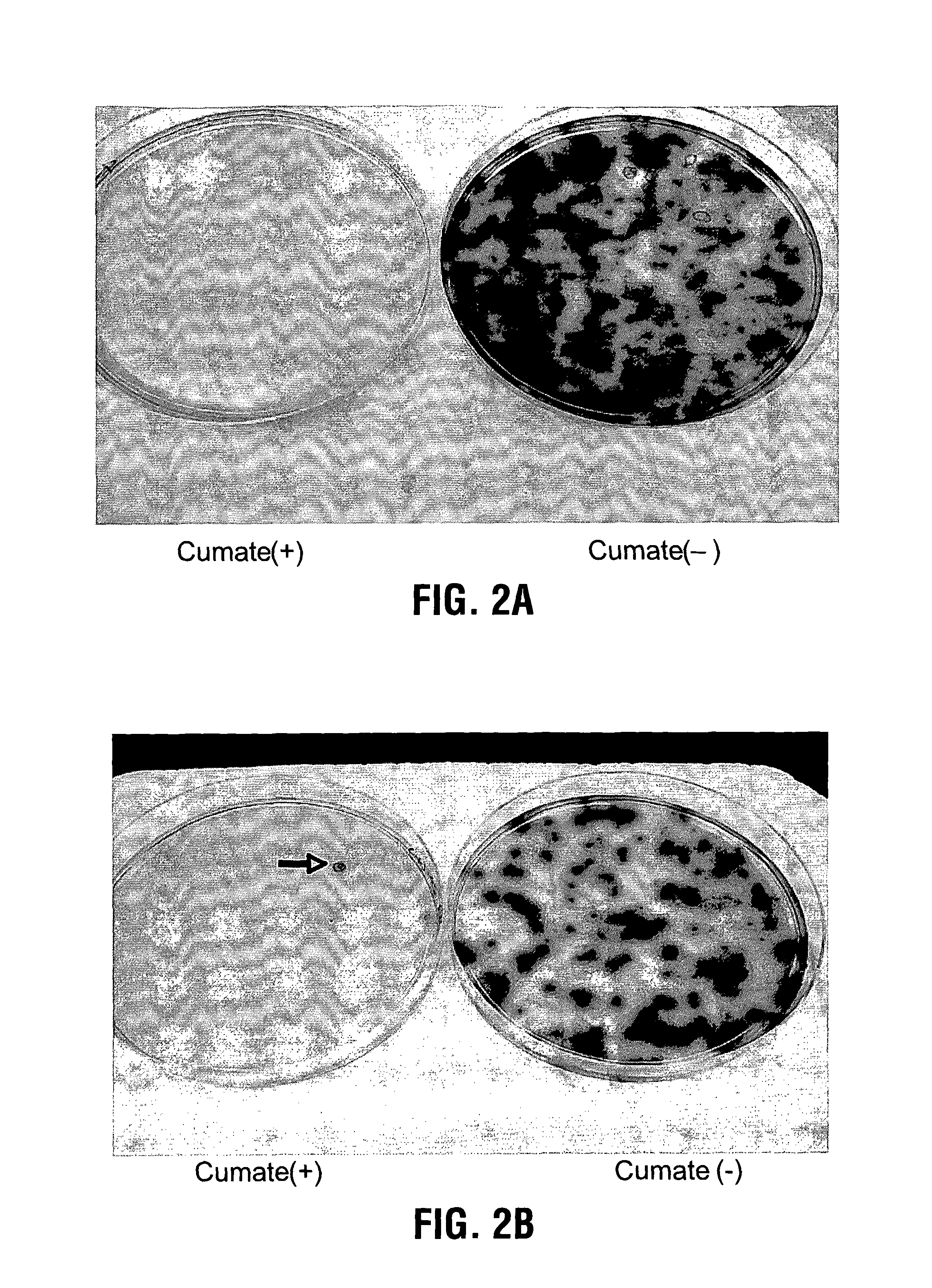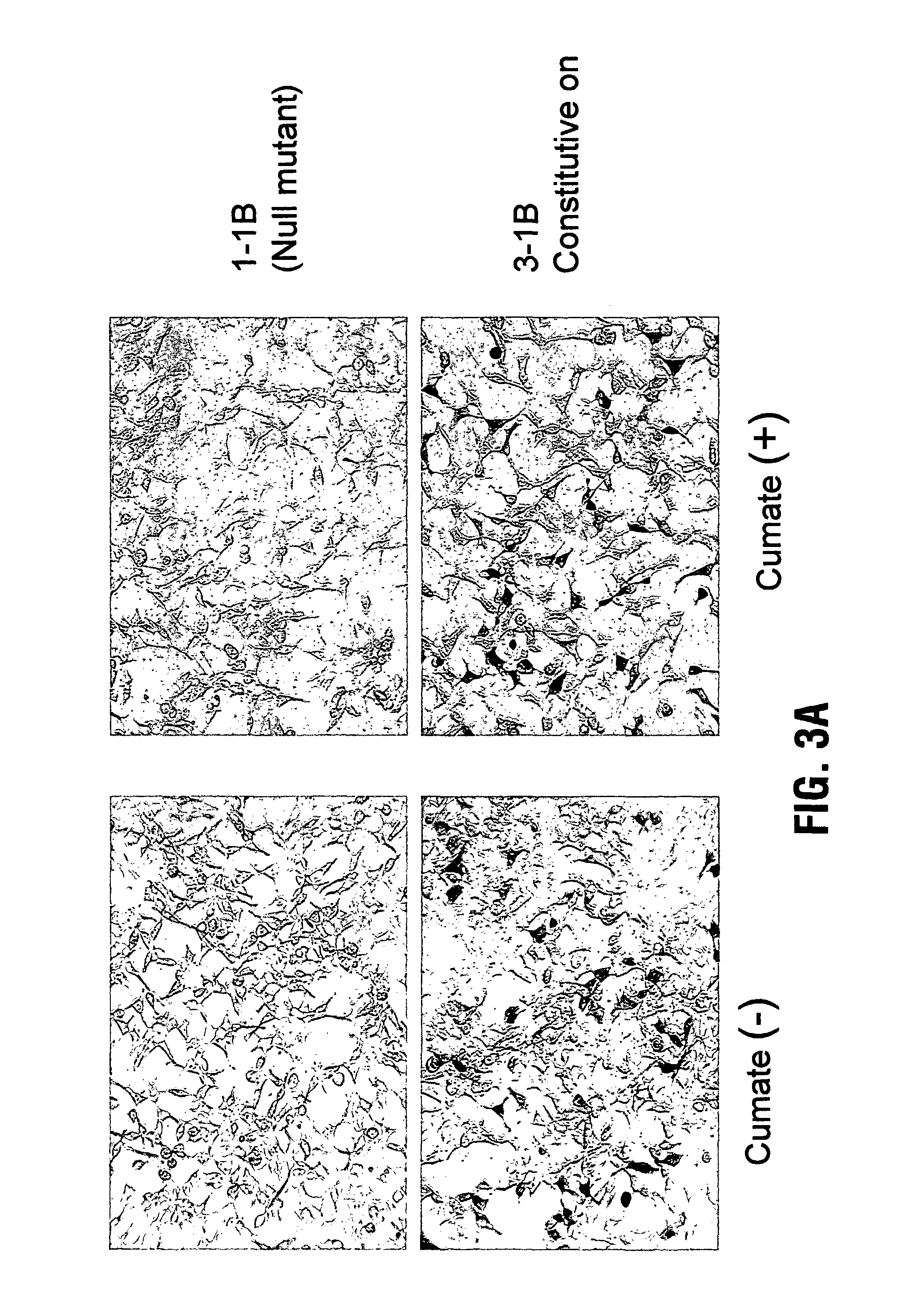Reverse cumate repressor mutant
a cumate repressor and mutant technology, applied in the field of gene expression, can solve the problem that the system is not as readily amenable to large-scale production
- Summary
- Abstract
- Description
- Claims
- Application Information
AI Technical Summary
Benefits of technology
Problems solved by technology
Method used
Image
Examples
example 1
Generation of a stable 293A Cell Line with a Reporter Gene LacZ and a Chimeric Promoter CR5
[0089]1×106 293A cells were plated in a 60 mm dish with fresh DMEM supplemented with 5% FBS and 1% L-Glutamine one day prior to the transfection. 4 ug of linearized plasmid DNA pAdCR5LacZ-neo (Mullick et al 2001) was transfected into 293A cells using 8 ul of PEI reagent (obtained from Biotechnology Research Institute, Montreal). After 48 h transfection, the cells were transferred into 96-well plate with the diluted ratio of 1-1.3 cells per well. 600-800 ug / ml G418 was added to the culture medium for stable cell selection. Resistant clones were picked after 3 weeks and verified by measurement of the expression of LacZ enzyme through the infection of adenovirus containing the fusion transactivator CymR-VP16(2).
example 2
PCR Random Mutagenesis of CymR
[0090]A chemically synthesized double-stranded oligonucleotide, encoding a 5 Glycine peptide and bearing the sequences of a Not I restriction site at the 3′end and one mismatched Not I site at the 5′end, was ligated to equally restricted pAdCMV5cTA, which expressed the fusion transactivator, to generate a linker between CymR and VP 16.
[0091]The PCR random mutagenesis of CymR was carried out using GeneMorph™ PCR Mutagenesis Kit (Stratagene, La Jolla, Calif.) according to the manufacturer's instructions. Briefly, the resulting plasmid pAdCMV5cTA-linker (referred to as cTA) was used as a template for CymR mutations and the PCR was performed with the primers 5′-TCCACTTTGCCTTTCTCTCC (SEQ ID No. 3: N terminal primer) and 5′-GTTTTTCGTACGCGCGCGGCTGTACG (SEQ ID No. 4: C terminal primer) under conditions which would lead to frequent misincorporation of nucleotides. A total of three groups with different degrees of nucleotide misincorporation ranging from 0-3 mism...
example 3
Adenovirus Screening Assay
[0092]The adenovirus positive selection system has been described previously(4). 293A cells were plated in 100 mm dish one day before the infection which was performed using modified adenovirus Ad5-ΔPS at a MOI of 10−2. 5 h later, 1 ug DNA of linerized pAd-PS-CMV-mut-cTA-IRES-GFP plasmid and 20 ul of PEI were transfected into the 100 mm dish of infected 293A cells to generate recombinant Ad5-PS-CMV-mut-cTA-IRES-GFP libraries. 3 days later, cells were harvested and frozen / thawed for 3 times to release the recombinant viruses. The measurement of virus titers was done by plaque assay(5). Briefly, fresh 293A cells in 6-well plates were infected with different dilutions (ranging from 10−1 to 10−10) of the recombinant viral stock medium. After 6 h, the infected 293A cells were overlaid by sea plaque agarose and counted for the viral plaques after 15-day culture.
[0093]5×106 of 293A-CR5-LacZ were plated in to each 100 mm dish, cultured overnight and infected with 1...
PUM
| Property | Measurement | Unit |
|---|---|---|
| temperature | aaaaa | aaaaa |
| temperature | aaaaa | aaaaa |
| temperature | aaaaa | aaaaa |
Abstract
Description
Claims
Application Information
 Login to View More
Login to View More - R&D
- Intellectual Property
- Life Sciences
- Materials
- Tech Scout
- Unparalleled Data Quality
- Higher Quality Content
- 60% Fewer Hallucinations
Browse by: Latest US Patents, China's latest patents, Technical Efficacy Thesaurus, Application Domain, Technology Topic, Popular Technical Reports.
© 2025 PatSnap. All rights reserved.Legal|Privacy policy|Modern Slavery Act Transparency Statement|Sitemap|About US| Contact US: help@patsnap.com



